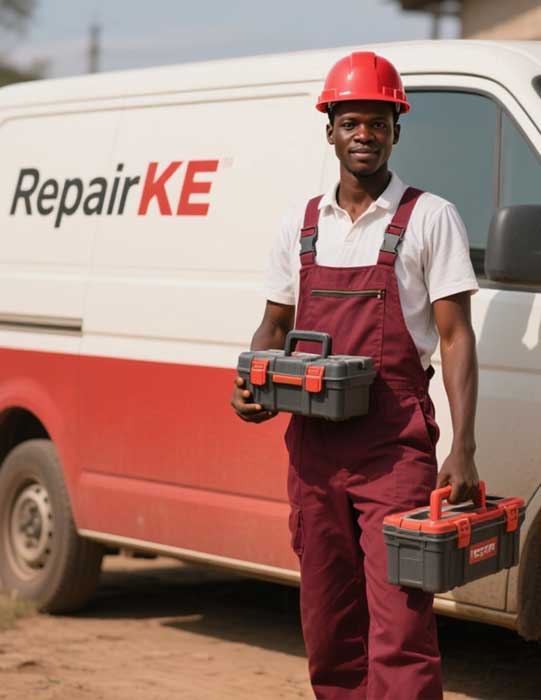
The thermostat in a water dispenser is a critical component that ensures your appliance delivers water at the desired temperature, whether hot or cold. Understanding its purpose, recognizing signs of failure, and knowing the cost of replacement can help you maintain your dispenser’s efficiency. By addressing thermostat issues promptly, you can avoid costly repairs and extend the lifespan of your appliance. This article explores the thermostat’s role, symptoms of breakage, and the price range for replacements in Kenya.
What is a Water Dispenser Thermostat?
A water dispenser thermostat is a temperature-regulating device that controls the heating and cooling mechanisms in the appliance. It maintains the water at a consistent temperature, ensuring hot water stays hot (typically 85–95°C) and cold water remains chilled (around 5–10°C). The thermostat works by sensing the water temperature and activating or deactivating the heating element or cooling compressor as needed. This ensures energy efficiency and user convenience, making it an essential part of both domestic and commercial water dispensers.
Purpose of the Thermostat
The primary purpose of the thermostat is to regulate temperature for optimal performance. Here’s why it’s important:
- Temperature Control: Ensures hot water is ready for tea, coffee, or instant meals and cold water is refreshing.
- Energy Efficiency: Prevents overheating or overcooling, reducing electricity consumption.
- Appliance Longevity: Protects the dispenser’s components by maintaining safe operating temperatures.
- User Safety: Prevents scalding from excessively hot water or ineffective cooling.
Without a functioning thermostat, the dispenser may fail to deliver water at the desired temperature, leading to inconvenience and potential damage to the appliance.
Symptoms of a Broken Thermostat
A faulty thermostat can disrupt the performance of your water dispenser. Look out for these common signs:
- Inconsistent Water Temperature: Hot water isn’t hot enough, or cold water feels lukewarm.
- No Heating or Cooling: The dispenser fails to heat or cool water entirely.
- Overheating: Hot water becomes dangerously scalding, indicating the thermostat isn’t cutting off the heating element.
- Frequent Cycling: The heating or cooling system turns on and off rapidly, suggesting a malfunction.
- Unusual Noises: Clicking or buzzing sounds from the thermostat relay may indicate internal failure.
- Increased Energy Bills: A broken thermostat may cause the dispenser to run continuously, consuming more power.
If you notice any of these symptoms, it’s advisable to have the thermostat inspected by a professional technician to prevent further damage.
Price of a Water Dispenser Thermostat in Kenya
The cost of replacing a water dispenser thermostat in Kenya varies depending on factors such as the dispenser’s brand, model, and whether it’s a hot-and-cold or single-function unit. Here’s a general price range:
- Basic Models: KSh 1,500–3,000 for standard thermostats used in entry-level dispensers.
- Mid-Range Models: KSh 3,000–5,000 for thermostats in popular brands like Ramtons, Mika, or Bruhm.
- High-End Models: KSh 5,000–8,000 for advanced thermostats in premium brands or commercial-grade dispensers.
- Labour Costs: Professional installation typically costs KSh 1,000–2,500, depending on the complexity of the repair.
Prices may vary based on location (e.g., Nairobi vs. rural areas) and the technician’s expertise. Always source spare parts from reputable suppliers to ensure compatibility and durability. At Repair.co.ke, we recommend getting a quote from a certified technician to confirm the exact cost for your specific dispenser model.
Tips for Maintaining Your Water Dispenser Thermostat
To extend the lifespan of your thermostat and avoid frequent replacements:
- Regular Cleaning: Prevent limescale buildup in the heating tank, which can strain the thermostat.
- Avoid Overloading: Don’t run the dispenser continuously beyond its capacity.
- Professional Servicing: Schedule annual maintenance checks to detect early signs of wear.
- Use Genuine Parts: Replace faulty thermostats with brand-compatible components to ensure optimal performance.
By following these tips, you can minimize the risk of thermostat failure and keep your water dispenser running smoothly.
For expert water dispenser repairs and genuine spare parts in Kenya, contact Repair.co.ke today!




